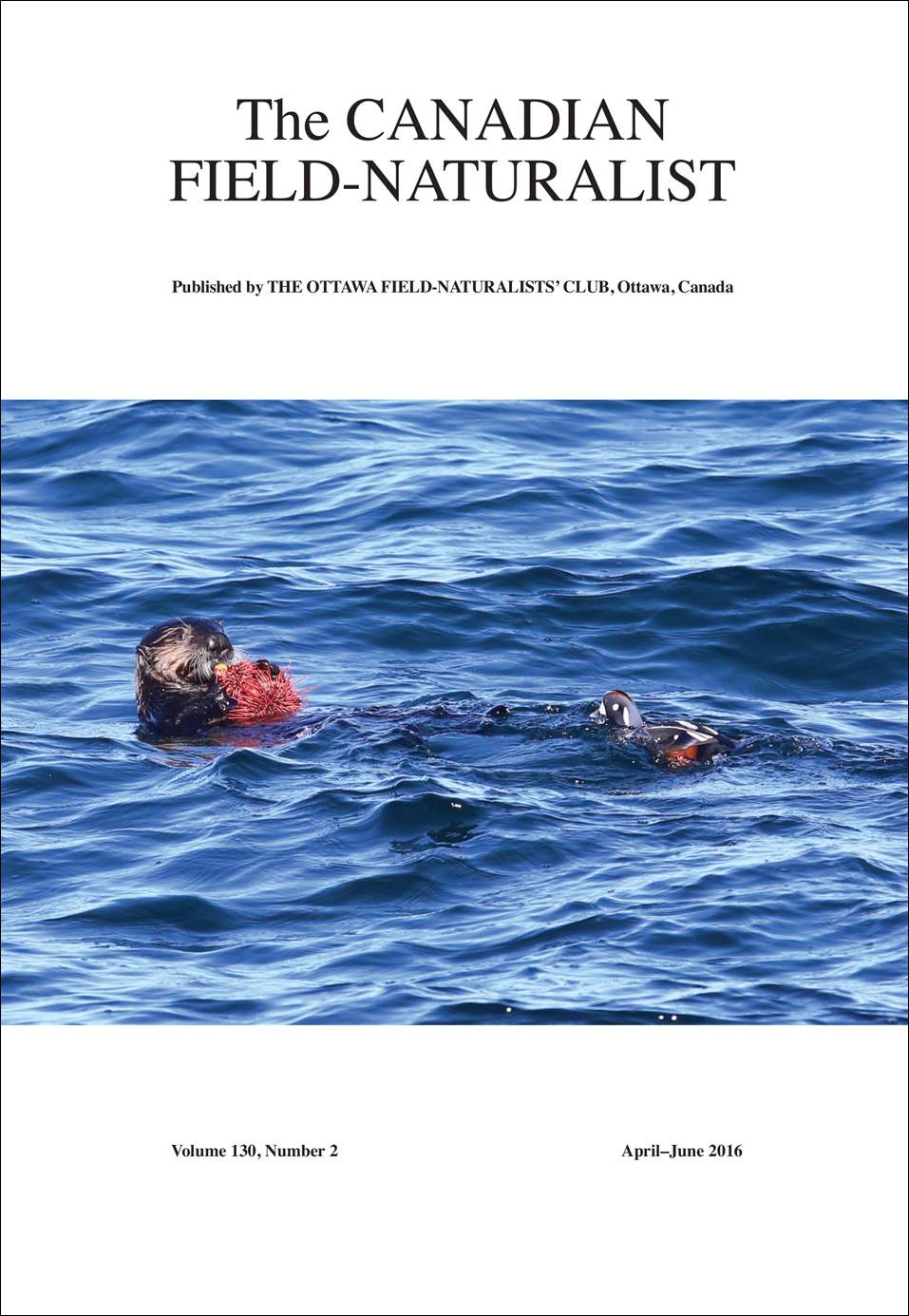Reproductive Rates in Lesser Scaup (Aythya affinis) in Southwestern Manitoba: Another Look at the Data
DOI:
https://doi.org/10.22621/cfn.v130i2.1834Keywords:
Lesser Scaup, Aythya affinis, Manitoba, reproductive ratesAbstract
Surveys indicate that Lesser Scaup (Aythya affinis) populations declined during the early 1980s and have since remained below conservation goals. Reasons suggested for the decline include chemical contamination, climate change, and reduced food resources. According to the latter theory, reproductive success of Lesser Scaup has declined because females now arrive on the breeding grounds with fewer nutrient reserves than in the past and this diminished body condition is the result of reduced food resources available at wintering and/or migration areas. To determine whether reproductive success has declined over time, I examined selected Lesser Scaup reproductive rates from 2008 to 2014 in southwestern Manitoba and compared them with those recorded before the continental population decline. Estimated productivity (age class IIa broods/pair), hatching date, Ia and IIa brood size, duckling survival rate (first sighting to age class IIa), and proportion of age class IIa broods with females in attendance were unchanged from values recorded in 1970–1972. Thus, if females are arriving on southern breeding areas with reduced body reserves, they may be recovering these losses before nesting, enabling them to attain reproductive rates similar to those in the past. In addition, these results are consistent with the hypothesis that reduced food resources at non-breeding areas could affect recruitment of southern prairie-parkland breeders to a lesser extent than northern breeders because of the longer time between arrival and egg-laying in the south.Downloads
Published
Issue
Section
License
Copyright for Canadian Field-Naturalist content is held by the Ottawa Field-Naturalists' Club, except for content published by employees of federal government departments, in which case the copyright is held by the Crown. In-copyright content available at the Biodiversity Heritage Library is available for re-use under a Creative Commons Attribution-NonCommercial-ShareAlike 4.0 (CC BY-NC-SA 4.0) licence. For usage of content at the BHL for purposes other than those allowed under this licence, contact us.
To request use of copyright material, please contact our editor, Dr. Dwayne Lepitzki: editor -at- canadianfieldnaturalist -dot- ca





